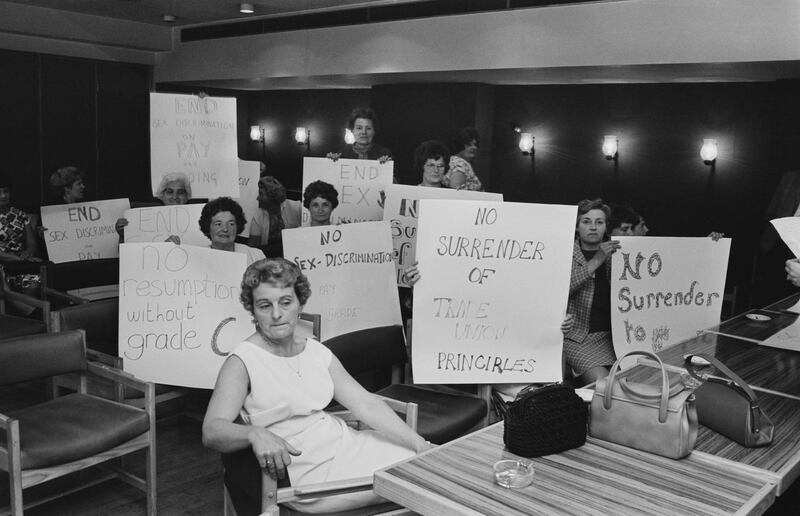In 1968 at the Ford car plant in Dagenham in the UK, the female sewing machinists who made car seat covers went on strike. They argued that they ought to be paid more for their work, in line with male workers, saying that their work was just as valuable as the men’s.
It was a turning point in the discussion about women’s pay in the UK and eventually led to the passing of the Equal Pay Act in 1970. It stated that equal pay was due if the work done by the claimant is broadly the same, of equal value in terms of effort and skill and was evaluated the same. It followed in the footsteps of the Equal Pay Act in the US of 1963.
This week, the UAE Cabinet approved a new wage equality law although, as this newspaper reported, analysts suggest work will need to be done to achieve true equality.
The latest data from the UK’s Office for National Statistics shows that women who work full-time still earn 9 per cent less than their full-time male counterparts.Things seem even worse in the US. According to the American Association of University Women, half a century on women still only earn about 79 cents for every dollar that men earn.
According to the UN Population Fund, the pay gap is consistent around the world. Women earn 23 per cent less than men on average and it will take more than 70 years before the gap is closed.
The details of the Ford strike are instructive. While the headlines of history frame the incident as a demand for equal pay, the specifics demonstrate that "equal pay for equal work" can be easily subverted. The women were striking because their work had been recategorised into a level graded as less skilled than the work the men were doing, which meant a resultant lower pay. What they were asking for was for their work to be recognised at the same level of skill, which would then automatically result in equal pay. What they got instead was an agreement to increase their pay but there was no recognition of the calibre of their work. The subtext appears to be that because women were doing the work, it must be less skilled.
___________________________
Read more from Shelina Janmohamed:
[ Beauty is in the eye of the social media user – but it shouldn't be ]
[ Instead of maligning women who refuse to 'settle', let's encourage men to step up ]
[ Am I a supermum? More importantly, do I want to be? ]
___________________________
In a more recent example, last year the BBC's China editor Carrie Gracie resigned from her post, complaining that two female international editors were being paid 50 per cent less than their male counterparts despite doing the same job. Her work was regarded as being less significant and therefore worthy of lower pay despite her comparable experience, the enormity of her beat and the personal danger reporting under difficult circumstances.
All of that is before we tackle issues like the vast amount of free unrecognised labour such as housework and childcare that women provide into the marketplace. Women bear additional penalties simply as a cost of doing business. Childcare costs are often carried by women. Pressures are much higher on women to groom themselves in a particular way with fashion and cosmetics so that they are deemed to look acceptable for work and come with a financial implication.
Women find themselves trapped in a vicious cycle – already earning less due to the gender pay gap, exacerbated by the maternity penalty – families weigh up their finances and decide it makes more sense for the woman who earns less and bears more of the household burden to relinquish her work or take a part-time lower paid role. The move to sharing the workload better in the home goes hand-in-hand with better opportunities and equal pay in the workplace.
If we’ve learnt anything from the last 50 years, it is that, for complex reasons, the real shift in pay takes much longer to deliver.
Shelina Janmohamed is the author of Love in a Headscarf and Generation M: Young Muslims Changing the World





